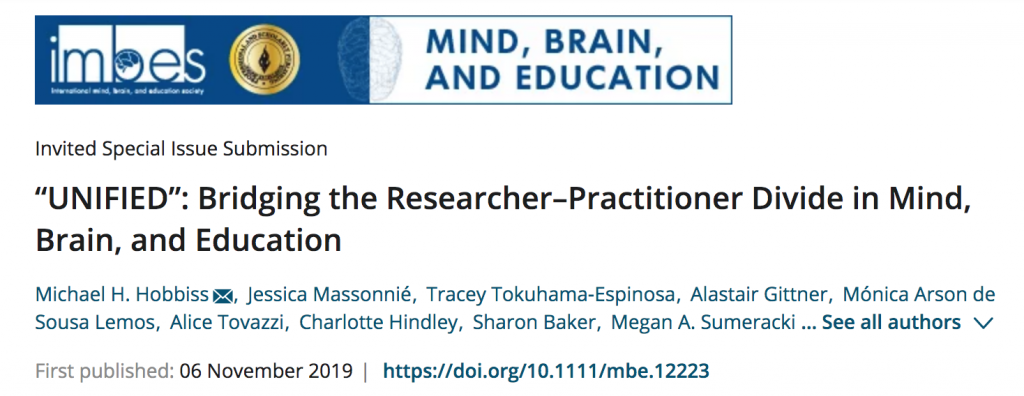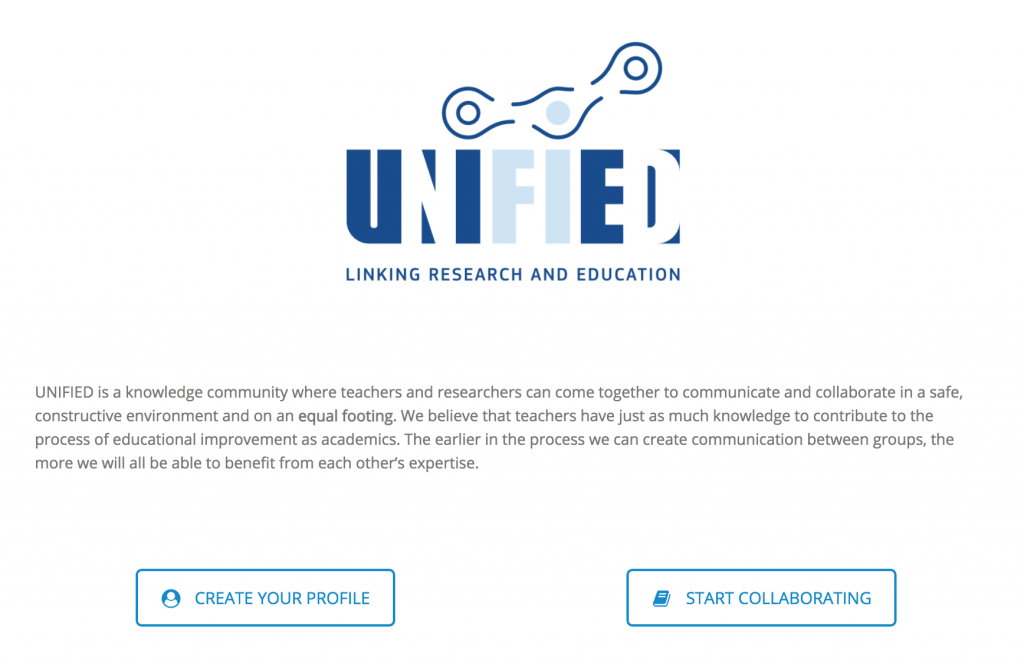UCL researchers Michael Hobbiss and Jessica Massonnié contribute to the current debates in educational neuroscience* with their new collaborative paper: “Unified: Bridging the Researcher-Practitioner Divide in Mind, Brain and Education”.
The paper aims to offer practical solutions to “bridge the gap” between research and practice, or, if you have enough of bridge metaphors, to better connect educators with researchers so that they can construct research projects together.
The paper was born from the 2018 EARLI SIG 22 “Education and Neuroscience” conference. In an innovative Open Space Session, educators and researchers could share their concerns, questions, and advances within the field of educational neuroscience. Attendees from various backgrounds were interested to reflect on the creation of a common “Database for Schools and Researchers”. A working group emerged, composed of educators (Charlotte Hindley, Sharon Baker, Alastair Gittner), researchers (Michael Hobbiss, Jessica Massonnié, Tracey Tokuhama-Espinosa, Megan Sumeracki, Alice Tovazzi, Ignatius Gous and Thomas Wassenaar), and of a school psychologist (Mónica Lemos). The group worked together during, and after the conference in order to: 1) review the current tools available for researchers and educators to communicate; 2) identify what was needed for collaborations to be further facilitated and flourish; 3) propose a web platform aiming to answer these needs. These three processes are fully described in the paper, and summarised below.
1) The current tools designed to facilitate communication in educational neuroscience were classified into three categories, according to their primary goal: to transmit academic findings, to receive information about educators’ expertise, to promote collaboration between educators and researchers. Most of the resources were classified as transmitting information from researchers to practitioners, which corresponds to a somewhat unidirectional model. The group noticed the scarcity of resources aiming to foster collaborations. Although Research Schools in the US and in the UK form notable exceptions, there are difficulties to find a unified resource to promote large-scale, and bi-directional collaborations.
2) In order to better understand how such collaborations could be facilitated, the working group then carried out a SWOT analysis of transdisciplinary partnerships in educational neuroscience. This type of analysis, borrowed from business project planning, allows to classify the current Strengths and Weaknesses, as well as more long-term Opportunities and Threats of transdisciplinary partnerships. The Strengths and Opportunities are numerous. Research in Psychology and Neuroscience feed each other, while also informing, supporting and/or questioning current classroom practices. Conversely, teachers’ input helps to build more impactful and “real-world” projects, increasing the potential benefits for learners. Ultimately, lab-school partnerships can increase scientific support for good practice in classroom interventions, while empowering teachers as “learning scientists”. However, current Weaknesses and anticipated Threats seem to prevent the field from reaching its full potential. The obstacles are both conceptual (there is a risk of implementing “evidence-informed” interventions that would not be fully contributed by teachers), and practical (such as increased ethical and logistical considerations, and increased time commitment).
To offer practical solutions to these problems, and not only to discuss them conceptually, the working group developed a web platform aiming to directly connect educators and researchers, so that they can develop projects together. On their profile, users can define their interests. The information they provide includes space and time practicalities (e.g. where and how often they would like to be involved in research), the population they would like to work with (e.g. elementary school children, high school students, adults), and the topic they would like to investigate (e.g. memory, stress). The working group worked on some practical solutions to address conceptual issues related to lab-school partnerships, such as difficulties to share a similar vocabulary. Research topics are organised into tags. Each tag consists in a short word (e.g. memory) with a hyperlink showing the profiles of all the users interested in the given topic. This way, users from an educational and a research background can specify their interest from a common bank of words.
As commented by Michael Hobbiss (former secondary school teacher, now researcher at UCL): “The platform seemed necessary because currently both researchers and educators are desperate to meet professionals from the other side, but they don’t quite know how to make the first step to find others with similar interests. UNIFIED aims to bridge that gap. As well as hopefully allowing for research partnerships to be created more easily, this system will let teachers and schools become involved in research at a much earlier stage, allowing them to shape it more successfully to meet their needs”.
The platform is now in a piloting phase. We are happy to receive feedback from new users, and will have a larger scale launch in January!
If you do not manage to access the paper, please email:
j.massonnie@ucl.ac.uk
* For the purpose of this blog, we will consider the phrase “educational neuroscience” to be equivalent to “Mind, Brain and Education”, which is most often used in the American literature (and in the published research paper).


